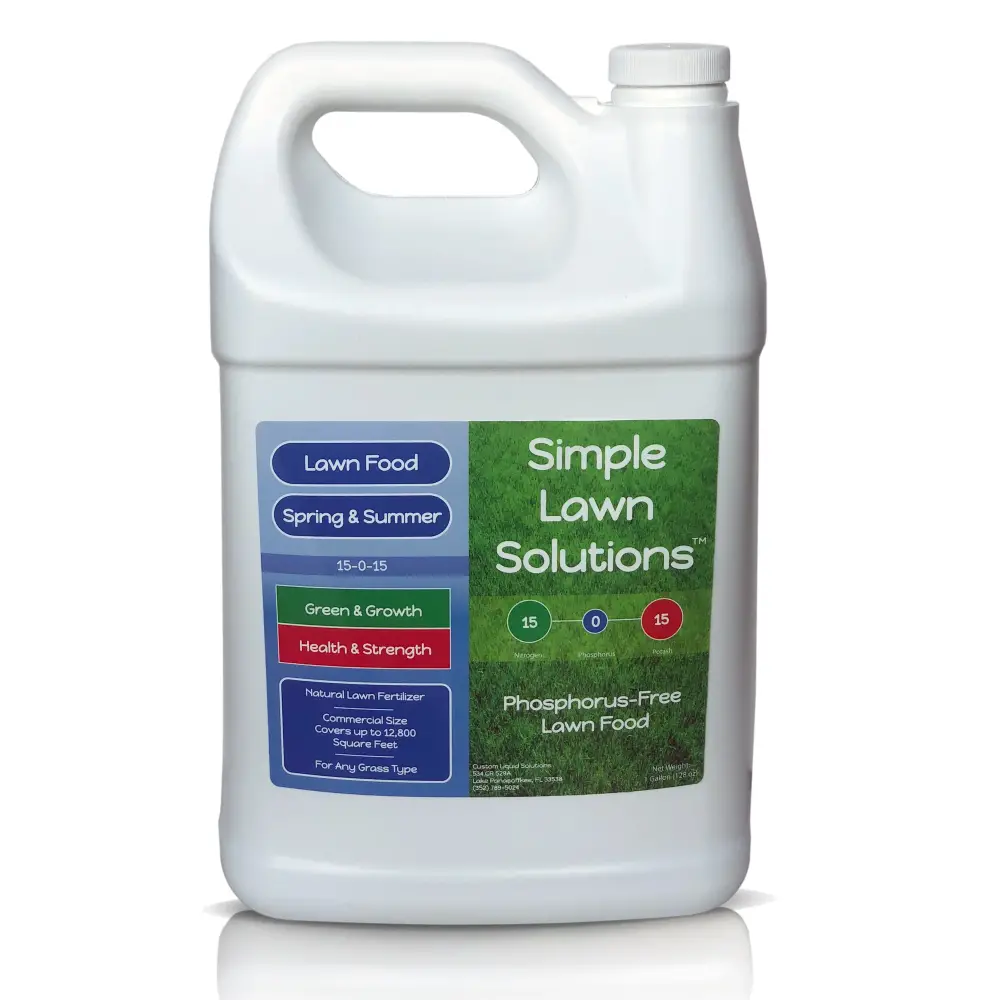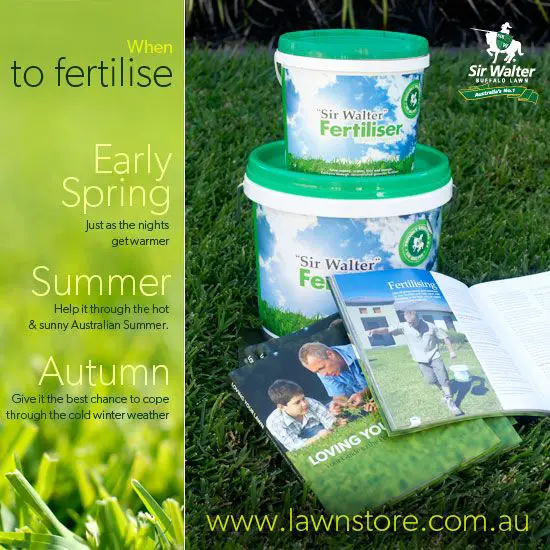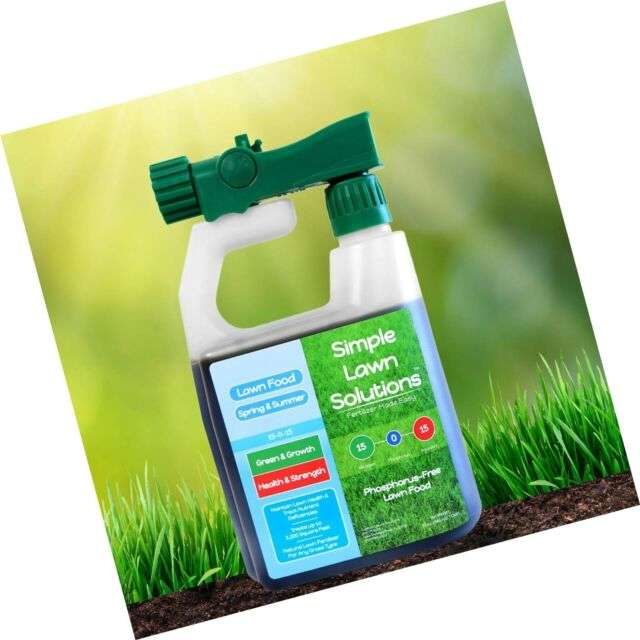Espoma Eofw30 Organic Fall Fertilizer
If you have sandy soil, then this is the best lawn fertilizer for your yard. Espoma EOFW30 Organic Fall Fertilizer is a slow-release fertilizer that will help improve the quality of your grass and other plants. Its also an organic fertilizer, so it wont burn or damage your lawn in any way.
The fall is the perfect time to fertilize because it doesnt get too hot to work with and you dont have to worry about winter weather affecting its effectiveness.
When To Apply Fertilizer For Sandy Soil Grass
- Apply fertilizer in the spring and summer. For example, you can apply fertilizer once a month during the warmer months of March to June.
- Apply fertilizer in the fall. Fall is also a great time to apply fertilizer because it gives your grass time to absorb it before winter arrives.
- Apply fertilizer in the winter. During this time of year, when theres less rain and snowfall, root systems cant absorb water as effectively so fertilizers are especially helpful for keeping roots healthy at this time of year.
Best Fertilizer To Prep Your Lawn For Winter
I like Jonathan Green Winter Survival Fall Fertilizer, a late-fall fertilizer, because its low in nitrogen and has a healthy amount of potassium.
We want our lawns to slow down as winter approaches, so its important to know when to fertilize in fall and which fertilizer to use. Applying too much nitrogen forces it to grow when it would rather start preparing for winter. The 10-0-20 analysis delivers just enough nitrogen to help repair your lawn from a stressful summer and to give it a kick-start the following spring. The healthy dose of potassium will also safeguard your lawn from potential snow mold activity and severe winter conditions.
You May Like: Do It Yourself Lawn Care
Best Grass Seed For Michigan Sandy Soil A Guided To Thriving Lawns All Year Through
If youre in search of the Best Grass Seed for Michigan Sandy soil, then the information in this blog post is for you. Sandy soil can sometimes be hard on grass seedlings therefore, we offer helpful advice on choosing grass seeds for this type of soil.
If youre looking to get the most out of your lawn or simply keep it green and healthy, then youll want to make sure that you have the right grass seed for your particular soil type. That way, youll be able to reap all the benefits that only a healthy lawn can provide.
The best types of grass that weve listed in this article are the ones that thrive in Michigan. So, have a look at the information below and learn how to grow lush lawns all year through. We have also added an additional link and video to give you insight into the best grass seed for Michigan sandy soil and much more!
How Often To Apply Lawn Fertilizer For Sandy Soil

How often to apply lawn fertilizer for sandy soil depends on many factors. Youll need to consider how much fertilizer youre using, what type of grass you have, and how much sun it gets in order to determine how often to apply your fertilizer.
You should be applying about 1 pound of nitrogen per 1,000 square feet once a month for each application. This will provide enough nutrients for your lawn without overfeeding it with too much nitrogen that can harm the grass root system and allow weeds to grow more easily than normal.
If you have more than one type of grass growing in your yard , then mix up the types so there is no imbalance between them this will help ensure that both types receive adequate amounts of nutrients at all times throughout the year.
Read Also: What Size Spark Plug For Troy Bilt Lawn Mower
How Long To Apply Fertilizer For Sandy Soil Grass
You should apply fertilizer to sandy soil in the spring and early summer when the grass needs the most nutrients. Fertilizer can be applied every two weeks or as a single application of 1 inch deep. Be sure to fertilize at night or in the early morning, as the hot sun can burn your grass and cause damage that will ruin its appearance and shorten its lifespan.
Lawnsmith Spring & Summer Fertiliser For Sandy Soil
- lawnsmith.co.uk
- Summary: A controlled release lawn feed that doesnt need rain or watering in. Suitable for play lawns to bowling greens. With added calcium, sulphur and seaweed
- Matching search results: Micronutrients include boron, copper, iron, and zinc these are known as micronutrients because your lawn needs only small quantities of them to grow well . Micronutrient fertilizers use chelates or complexes to deliver these
Recommended Reading: How Much Does Lawn Care Cost Per Year
Lawn Fertilization In Texas Aggie Horticulture
- aggie-horticulture.tamu.edu
- Summary: Turfgrasses growing in sandy soils require more frequent applications of nitrogen than those growing on clay soils. Lawns in areas subject to high rainfall
- Matching search results: Slow release or organic fertilizers should be applied to established landscape plants in spring and to annuals and vegetables at planting time. A second application is usually needed in late June for annuals, vegetable gardens, and plants in
Organic Garden Soil: Use Organic Compost +more
Organic Garden Soil: Use Organic Compost +more
The gardens around my home in Richmond, VT, include a large vegetable garden, seasonal greenhouse, cutting garden, perennial gardens, rock garden, shade garden, berry plantings, lots of container plants and a meadow garden. Their excretions also help to bind soil particles into the small aggregates that make a soil loose and crumbly.
The silty soil found in an old floodplain is inherently different from stony mountain soil the clay soil that lay under a glacier for millions of years is unlike the sandy soil near an ocean. To improve clay soil: Work 2 to 3 inches of organic matter into the surface of the soil. To lower soil pH by about one point: In sandy soil: add 1 pound ground sulphur per 100 square feet. .
Also Check: How To Treat Heat Stressed Lawn
The Secret To Improving Sandy Soil
The Secret to Improving Sandy Soil
But those of us who have actually had to work with sandy soil know better. Sandy soil will crumble and fall apart.
Turn Sandy Soil into Sandy LoamOkay, so its not very scientific, but the test Ive just described is good enough for most gardeners. But even with the best will in the world, it will always be sandy soil at heart. When youre itching to get growing at the start of the year, sandy soil is a plus.
How Do You Care For Sandy Grass
The first thing to understand about caring for sandy grass is that the soil needs more moisture than other types of grass. If you have sandy soil and are not watering your lawn regularly, it will die quickly. Watering can be done by hand or with a sprinkler system however, both methods should be applied evenly to prevent uneven growth of the lawn.
You will also need to mow your lawn frequently because it grows faster in sandy soil than other types of grasses do. If you choose not to remove dead blades on a regular basis, they may become infected with fungus or disease and spread quickly throughout the entire lawn. When mowing, use sharp blades at least once every six weeks, this will help prevent any infections from developing on your blade tips as well as keep them from tearing too much at once when going over uneven areas such as sidewalks or tree roots near sidewalks where there may be some exposed rocks below ground level which could cause damage if hit hard enough this would mean having to re-cut these areas later down into smaller pieces using scissors instead which takes extra time but prevents tearing up those same spots over again causing further damage like rips/tears across multiple lines even though only one pass was needed before due lengthier cuts were made with scissors instead.
Read Also: How To Keep Your Lawn Green In The Summer
How To Apply Lawn Fertilizer For Sandy Soil
To apply lawn fertilizer for sandy soil, follow these steps:
- Apply the fertilizer in the spring and fall at the rate of 1-2 pounds per 1,000 square feet. For example, if you have a 5,000-square-foot lawn you would apply 10 to 20 pounds of fertilizer per application.
- Apply evenly over the entire lawn using a spreader or by hand if you dont have access to a spreader. If using a spreader, be sure to overlap your previous pass with each new pass so that all areas of your yard get treated equally.
- Use slow-release or time-release granular as they will release nutrients into your soil slowly over time and not burn your grass like liquid fertilizers do when applied at higher rates in warm weather climates like ours.
Adding Soil Organic Matter Or Making Other Lawn Soil Amendments

Once your soil test shows what youre dealing with, its time to amend the lawn soil so its closer to ideal conditions for grass growth. Believe it or not, soil that is made up of 50 to 80% sand is actually great soil for growing grass. The soil is easy to work with, it drains well, and grass will be able to establish its roots well.
The downside? Sandy soil dries out quickly. Therefore, before you go to plant grass, you will often want to add organic matter like homemade compost. This will help it hold moisture better as well as add nutrients to your soil that will help grass flourish.
Most lawn owners work towards having sandy loam type soil. This soil is mainly sand, but also has some clay and silt, as well as organic matter. Take your soil test results and make the changes necessary to work towards sandy loam.
Loam soil, which is often considered the ideal, combines the main benefits of clay, sandy and silty soils. It has good fertility and an ability to retain some moisture as well as drain well. Loamy soil is easier to cultivate. The addition of organic matter maintains its fertility and open texture, for optimum root penetration.
Also Check: Which Self Propelled Lawn Mower Is The Best
How To Grow Grass In Sandy Soil
There is no doubt that growing grass in sandy soil is challenging. It is easy to work with on the plus side, and drainage is rarely a problem. However, the nature of sand means that water and nutrients leach out of the sand very fast. Follow these three tips if you want to know how to grow grass in sandy soil.
How To Improve Sandy Soil For Lawn
Sandysoil needs to be improved. The best sandysoil amendments increase the ability of the sandysoil to retain water and increase the amount of minerals in the soil. If you want to improve the quality of your soil, you should amend sandysoil with rotted manure or compost. Soil amendments can also be used to enhance the fertility of sandysoils.
For example, addingcompost or manure to a sandy loam soil can increase its fertility by addingnitrogen, phosphorus, potassium, and magnesium. Addingcompost and manure also increases the amount of organic material that can be incorporated into the sand, making it more resistant to erosion.
You May Like: How Much To Charge For Lawn Care
Milorganite Adds Organic Matter To Feed The Soil
Healthy soil is the key to healthier grass and plants. Milorganite is composed of 85% organic matter, which nourishes the plant and feeds the soil microbes. This improves the soils ability to grow grass and other plants. Milorganite is ideal for sandy soils because it adds organic matter and doesnt leach, which means the water-soluble nutrients arent washed away.
How To Water Sandy Soil
Since sandy soil types drain off excess moisture quickly, you may need to water them more frequently. Providing mulch on the surface will also aid in reducing water loss through evaporation. And, of course, working peat moss or coconut coir through your sandy soil will allow it to hold more water.
When the soil is fully dry, briefly dampen it and then wait a few minutes to allow the water to permeate through the sand particles. Then, do a slow, deep watering with a soaker hose or other drip irrigation method to ensure that the liquid can spread throughout the soil.
Maintain a watering frequency that suits your plants needs. Some plants require more than others, so theres no single method that works for everything!
Don’t Miss: How To Eliminate Nutsedge From Lawn
Hows To Choose The Best Fertilizer For Michigan Grass
There are different ways to fertilize your grass depending on what type of grass it is. This includes chemical fertilizers, organic fertilizers, and compost. Chemical fertilizers usually work best when applied in the fall, while organic fertilizers usually work well in the spring.
Compost is great all year round and can be used as either a fertilizer or soil amendment. It adds organic matter and nutrients to the soil, which ensures that your grass thrives. You can also make your own compost at home by using kitchen waste. However, it is also vital to use the best grass seed for Michigan Sandy Soil to ensure that you have an immaculate lawn.
If the fertilizer has N or P on the tag, its an N-P mix that will help them grow faster. If the fertilizer has K or S on the tag, its a K-S mix. This will give you better color, more luster, and more density. If the fertilizer has Mg, this means its an Mg-based fertilizer. Its magnesium-based, which is a very good option for your lawn. Click on the video for information about growing grass in sandy soil.
How To Grow Grass In Sand
When establishing a lawn in sandy soils, preparation is key to the successful germination of the grass seed as well as growth and coverage. Sandy soil drains really fast yet grass seed needs plenty of moisture to germinate.
Heres how to grow grass in sand successfully:
Be careful not to over-water your lawn. If you do, youll easily wash away the grass seed and end up with a poor germination rate.
Keep in mind that since sand soil is well-draining, it does not retain water and nutrients much. You may need to do a little more in terms of feeding your lawn established in sandy areas in Florida, Michigan, New York, Wisconsin, Texas, North Caroline, and South Carolina, etc.
References
Also Check: How Much Does Lawn Care Cost Per Hour
Jonathan Green Love Your Soil
Jonathan Green Love Your Soil is a natural fertilizer made from composted manure. Its a slow-release fertilizer, so its great for sandy soils and works well in the soil all year long. If you have pets or children who like to dig in the dirt, this fertilizer is safe because it contains no chemicals that could harm them. It also comes with a 10-year money-back guarantee, which means that if your lawn isnt green enough after using Jonathan Green Love Your Soil as directed, they will refund your money.
Final Word On The Best Grass For Sandy Soil

When it comes to growing a beautiful, lush lawn in sandy soil, the key is to find a grass variety that is hardy and drought-tolerant. It should be able to form thick sod mats or deep root systems to withstand the unstable nature of sandy soil and be resistant to the pests that often dwell there.
Centipede, Bermuda, zoysia, bahiagrass, and many varieties of fescue all fit this description perfectly. But which one is right for your yard depends on how cold your winters get, how shady your yard is, and exactly how sandy your soil is.
Have more questions about growing the perfect lawn in sandy soil? Drop a comment in the box below and we will help you find the answer.
About The Author
Aaron is the founder of and Essential Home and Garden. He likes to spend his spare time with his family, and doing DIY projects in the home and garden.
Welcome
Essential Home and Garden is a one-stop guide for homeowners. When we mean one-stop, we mean everything.
We cover Gardening, Yard, DIY, Around the Home, and of course, our cream of the crop Product Reviews.
As an Amazon Associate I earn from qualifying purchases. Disclosure statement.
You May Like: How To Repair Patchy Lawn
Best Vegetables For Sandy Soils
Most root vegetables hate overly soggy soils. While sandy soils are not universally beloved, theyre fantastic for growing your root vegetables in. Carrots, beets, radishes, parsnips, potatoes, and many other tuberous or deeply-rooted vegetables adore a sandy bed. These dont do as well in clay, as they prefer the light and loose texture of sandy soil.
Alliums such as garlic, onions, and leeks all like the soil to be a bit loose and sandy as well. So do many herbs and spices, particularly those grown in Mediterranean climates like oregano, rosemary, and so on.
Other fruits and veggies are able to thrive in sandy soil, too. It may require regular light watering, perhaps as often as once a day, but theyll still perform admirably. Tomatoes, squash, peppers, melons, and even lettuce can be grown without much difficulty in your sandy soils.
In the end, sandy soil is not a major drawback in the garden. In fact, many plants prefer it to the denser clay types. But improving it to make it more productive is a wise choice for any gardener.
Read Also: Peat Moss Top Dressing